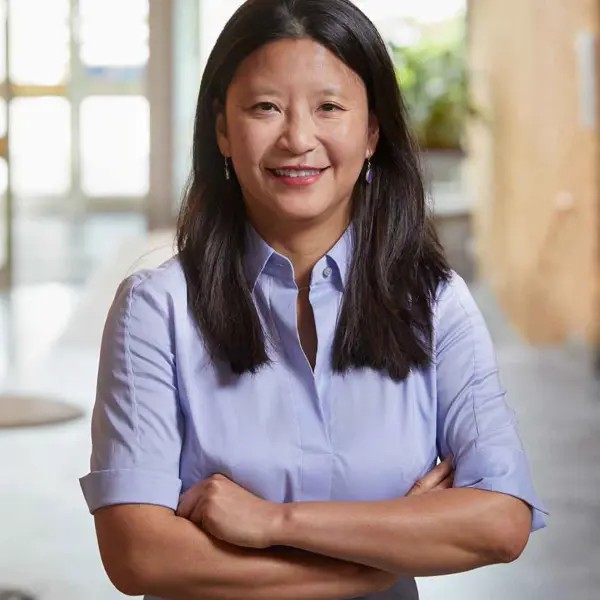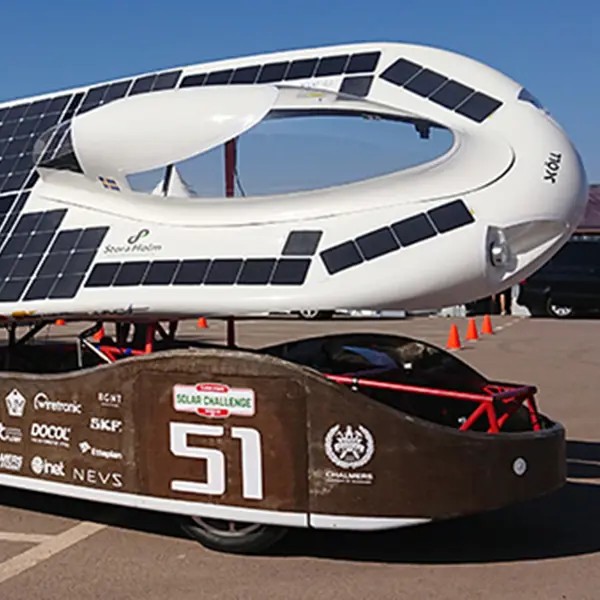
“We are in a global innovation race – essentially a clean energy version of the space race,” says Professor Sonia Yeh, an internationally recognized transport and energy systems expert at Chalmers University of Technology.
As the City of Gothenburg warmly welcomes global experts attending the EVS38, the world’s largest international conference on electric vehicles and sustainable transport, Sonia Yeh has a clear message: speed, coordination, and leadership will determine who leads the next phase of the transition.
On June 16–18, Gothenburg becomes the epicentre of electrified transport as EVS38 brings together global experts, policymakers, and industry pioneers. At the heart of it all, Chalmers University of Technology will showcase breakthrough innovations that span land, air, water, and energy systems. From autonomous drones and hydrogen-powered planes to megawatt charging pilots, cutting-edge battery research, and our champion student-built solar cars, the Chalmers booth offers a front-row seat to the future of mobility—designed, built, and tested by our researchers and students.
To meet the goals of the Paris Agreement, a radical transformation of our energy and transport systems is essential. The transport sector remains one of the largest sources of emissions – and in Sweden, emissions from transport and private consumption increased by 5.8 percent in 2024 alone, according to new data from Statistics Sweden. A clear signal: we’re not moving fast enough.
Sweden’s net-zero target by 2045 demands more than ambition. It requires bold action, cross-sector collaboration, and rapid innovation—from how we design vehicles to how we power and connect them.
EVs are central to the transition – but what’s holding us back?
“Electric vehicles are central to this transition, but progress varies sharply by region and mode,” says Professor Sonia Yeh. China is far ahead, with over half of all new cars being electric and high penetration of electric buses. Europe is catching up fast, including heavy-duty transport and new modes, aided by clear regulations like AFIR. In contrast, the U.S. continues to see uneven growth, shaped by fragmented policies and infrastructure gaps.
What’s clear across all contexts is that infrastructure, battery innovation, and smart policy are the engines of progress. Charging networks must be fast and reliable—especially for freight. Battery breakthroughs are making EVs cheaper and more efficient, but sustained investment is essential. And strong, consistent policy frameworks are what tie these efforts together and push them forward.
What Does the Future of Mobility Look Like—And Who’s Building It?
“We’re not just imagining the future—we’re building it. The Chalmers booth is where frontier research meets real-world impact,” says Sonia Yeh.
At EVS38, the Chalmers booth offers a glimpse of what’s next—not just in vehicles, but in the entire transport-energy ecosystem. Visitors can explore everything from virtual-reality training for battery safety to zero-emission freight solutions, and meet the minds behind Sweden’s national electromobility centre. And with student teams racing solar cars and building formula vehicles from the ground up, it’s also a celebration of the next generation of engineers and innovators.
And what’s your message to policymakers and industry leaders?
“We’re in a global clean tech race. The next breakthroughs won’t come from working in silos—they’ll come from fast, focused collaboration between policymakers, researchers, and industry. If we want to lead, we have to act strategically and fast.”
Related
EVS38 – The 38th International Electric Vehicle Symposium & Exhibition



